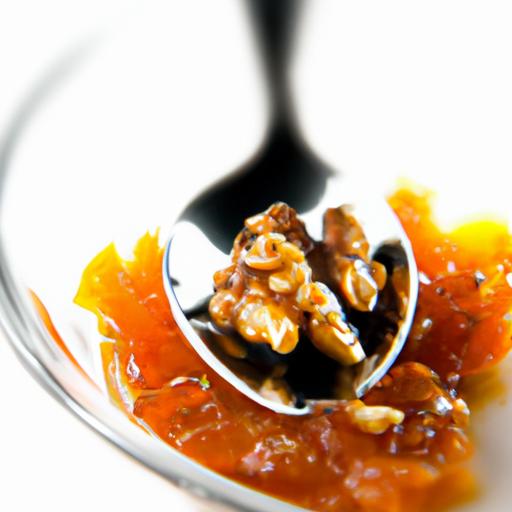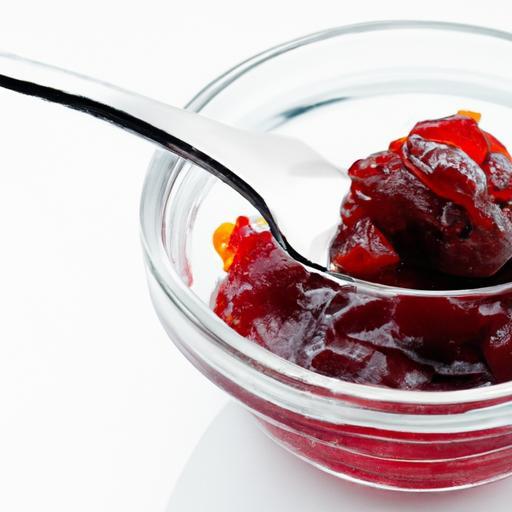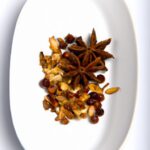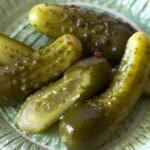Imagine a spoonful of homemade jam-its glossy surface shimmering with hints of sun-ripened fruit and the promise of sweetness. But how do you know when that luscious preserve has reached the perfect consistency, the ideal balance between spreadable and set? Enter the jam spoon test, a simple yet ingenious method that has been quietly guiding jam-makers for generations. In this article, we’ll unlock the secrets behind this time-honored technique, exploring how a humble spoon can transform your jam-making experience from guesswork to culinary confidence. Get ready to discover the sweet science that ensures every batch of jam is a delectable success.
Understanding the Science Behind the Jam Spoon Test
Unlocking Sweetness: What Is the Jam Spoon Test? is an essential skill for passionate home cooks eager to master homemade jams with impeccable texture and flavor. This simple yet effective test measures the jam’s readiness, ensuring the perfect balance of sweetness and gel consistency every time you cook.
Originating from generations of fruit preservation techniques, the jam spoon test harnesses the science of pectin, sugar, and acid interaction. Pectin, a natural fiber found in fruit, forms the gel structure when heated with sugar and acid. The spoon test visually and tactilely confirms if this chemical reaction has reached an ideal stage, preventing runny jams or overly stiff results.
Prep and Cook Time
- Preparation Time: 15 minutes
- Cooking Time: 25-35 minutes
- Total Time: 40-50 minutes
Yield
Approximately 4 cups (about 2 half-pint jars) of jam
Difficulty Level
Medium – Ideal for beginner to intermediate home cooks ready to deepen their jam-making skills
Ingredients
- 4 cups fresh or frozen fruit (e.g., strawberries, raspberries, or blueberries), hulled and chopped
- 3 cups granulated sugar
- 1 tablespoon lemon juice (freshly squeezed)
- 1 package fruit pectin (optional, depending on fruit type)
- Optional: zest of one lemon for added brightness
Step-by-Step Guide to Conducting Your Own Jam Spoon Test
- Prepare your fruit: In a large, heavy-bottomed pot, combine fruit, lemon juice, and pectin (if using). Stir gently to mix.
- Add sugar: Gradually stir in sugar, ensuring it dissolves evenly throughout the mixture.
- Boil the mixture: Bring your fruit and sugar blend to a vigorous boil over medium-high heat. Stir frequently to prevent burning and sticking.
- Begin the jam spoon test: Dip a cold, clean metal spoon into the boiling jam. Lift it out and hold it horizontally.
- Evaluate the consistency: Let the jam drip off the spoon. When the droplets fall away in thick, slow drops instead of thin streams, your jam is nearing perfection.
- Cooling plate method (optional for precision): Place a small spoonful of jam on a chilled plate. After cooling for 1 minute, push it gently with your finger. If it wrinkles and holds shape, your jam is ready.
- Remove from heat and jar: Once the perfect gel stage is confirmed, quickly ladle your jam into sterilized jars. Seal and invert briefly to create a vacuum seal.
Expert Tips for Achieving Ideal Sweetness and Texture Every Time
- Choose the right fruit: Fruits high in natural pectin such as apples, quinces, or citrus pith create firmer jams without extra pectin.
- Control sugar precisely: Sugar not only sweetens but helps gel formation. Adjust sugar to your taste but keep acidity constant for proper set.
- Use lemon juice: The acid balances sweetness and activates pectin’s gelling properties for a shiny, smooth result.
- Test early and often: The jam spoon test is your best friend-check every few minutes during the last boiling phase to avoid overcooking.
- Cool before final evaluation: Proper texture is best judged on cooled jam; patience pays off for the ultimate mouthfeel.
Chef’s Notes
- Substitute fruit pectin with homemade apple peel pectin for a natural alternative.
- If your jam is too runny, return it to a boil and perform the spoon test again after a few minutes.
- Overly stiff or crystallized jam? Reduce cooking time or sugar slightly next batch.
- Consider adding vanilla or herbs like thyme for gourmet variations.
- Make ahead: Store unopened jars in a cool dark place up to a year; once opened, refrigerate and consume within a month.
Serving Suggestions
Serve your homemade jam warm or chilled, spread luxuriously over freshly toasted brioche, warm buttered scones, or dolloped atop Greek yogurt for breakfast elegance.
For a charming presentation, garnish with edible flowers, lemon zest curls, or tiny fresh fruit pieces that echo your jam’s base. Pair with complementary cheeses like aged cheddar or cream cheese for a delightful contrast.
A beautifully styled glass jar of jam, showcasing the vibrant color and silky texture demonstrated in the jam spoon test, makes a perfect gift or centerpiece at your next brunch.
| Nutrient | Per 2 Tbsp Serving |
|---|---|
| Calories | 50 |
| Protein | 0 g |
| Carbohydrates | 13 g |
| Fat | 0 g |
For more on preserving fruit and perfecting your homemade creations, visit our homemade jam recipes collection. Learn about pectin science on FDA’s official page on pectin for a trustworthy external resource.

Q&A
Q&A: Unlocking Sweetness – What Is the Jam Spoon Test?
Q1: What exactly is the Jam Spoon Test?
A1: The Jam Spoon Test is a charmingly simple, old-fashioned kitchen trick used to check if your homemade jam has reached the perfect set or thickness. By dipping a spoon into the bubbling jam and observing how it behaves, you can unlock the secret to sweet success.
Q2: How do you perform the Jam Spoon Test?
A2: To perform the test, dip a spoon into the hot jam and lift it out slowly. Let the jam drip off. If it flows off like honey, your jam needs more cooking. But if the drips fall in thick, slow folds and the jam clings to the spoon without running off quickly, it’s ready – the perfect spreadable sweetness!
Q3: Why is this test important for jam making?
A3: The Jam Spoon Test helps avoid two kitchen disasters-runny jam that won’t set, or overcooked jam that turns hard and rubbery. It’s the go-to way to nail that ideal, luscious texture that spreads beautifully on toast and preserves the fruit’s fresh flavor.
Q4: Can the Jam Spoon Test be relied upon for all types of jams?
A4: While the Jam Spoon Test is a trusty staple for traditional fruit jams, some specialty preserves with different consistencies-like chia jams or low-sugar varieties-may behave differently. Still, it’s a handy first check before using sugar thermometers or other methods.
Q5: Are there any tips to make the Jam Spoon Test more accurate?
A5: Absolutely! Make sure your spoon and pot are clean and dry before dipping. Let the jam cool slightly on the spoon to better observe its setting behavior. And remember, patience is your ally: jams often continue to thicken a bit as they cool off the heat.
Q6: What if my jam doesn’t pass the test?
A6: No worries! If your jam is too runny, simply return it to the heat and simmer a little longer, then try the test again. If it’s too stiff, you might add a splash of water or fruit juice and gently reheat to soften it up.
Q7: Can the Jam Spoon Test replace using a sugar thermometer?
A7: The Jam Spoon Test is more of an artful, tactile guide, while sugar thermometers provide precise temperature control-typically aiming for about 220°F (104°C). For beginners or traditional cooks, combining both methods can ensure sweet perfection every time.
Q8: What’s the takeaway for home jam enthusiasts?
A8: The Jam Spoon Test is like a secret handshake between you and your jam – a simple, effective way to unlock the perfect set without relying on gadgets. It keeps the magic of homemade sweetness alive, one spoonful at a time.
In Summary
As we’ve spread through the layers of the jam spoon test, it’s clear this simple ritual holds more than just sticky sweetness-it unlocks a deeper understanding of jam’s true perfection. Whether you’re a kitchen novice or a seasoned preserve pro, mastering this little test can transform your jam-making from guesswork to guaranteed delight. So next time you dip your spoon, remember: it’s not just about the jam sticking-it’s about capturing that perfect moment where fruit, sugar, and time blend into a luscious symphony of flavor. Unlock the sweetness, one spoonful at a time.


